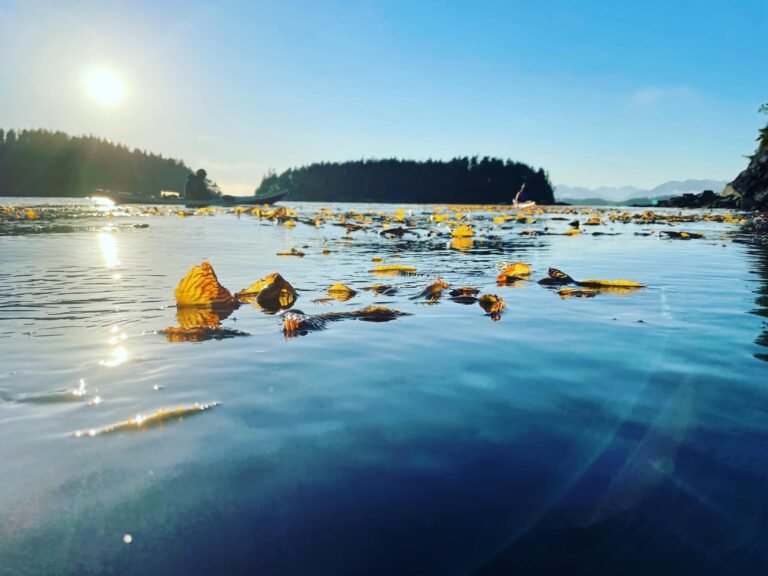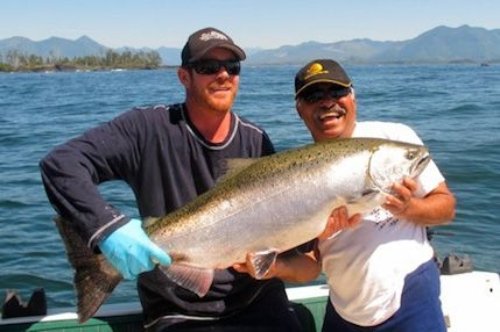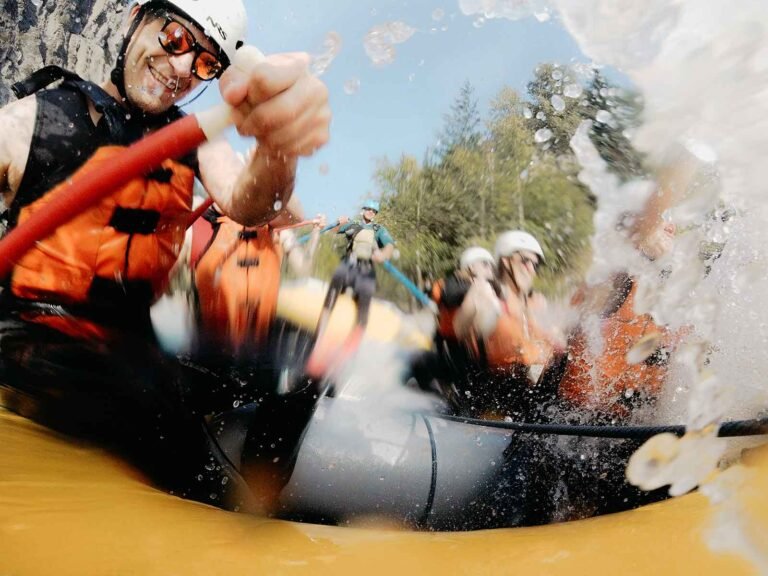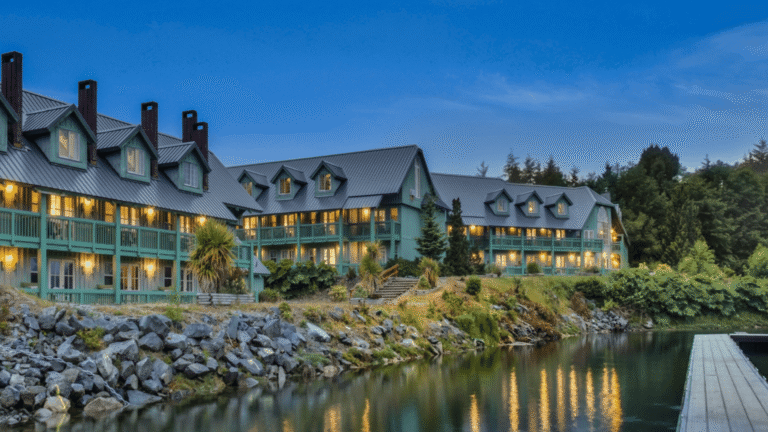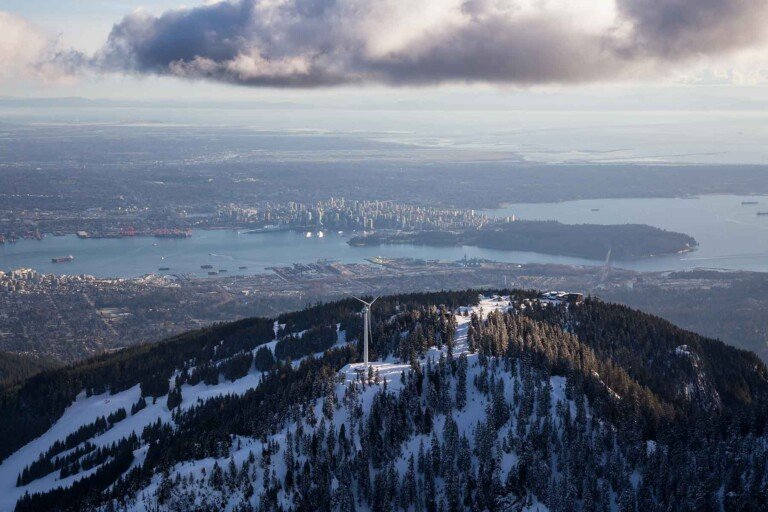Wildlife Viewing Operators: Vancouver Island & BC Islands
The viewing of wildlife on and around Vancouver Island and The Gulf Islands of British Columbia offers something for all nature lovers.
Whale watching requires little introduction, as British Columbia is well known as the place on earth to watch migrating and resident whales feeding, breaching or spy-hopping. Regulated whale watching tours are operated out of most larger towns in the region.
The best time to see migrating gray whales is during March and April, although a number of them stay to reside in the area off Vancouver Island’s west coast for the summer.
This allows whale sightings throughout the summer and into fall, before the gray whales head south to Mexico for the winter. The best time to see killer whales (orcas) around south island is from May to September, and from July to September in northern Vancouver Island.
The phenomenon of salmon spawning draws people from all over the world to the Pacific Northwest to watch schools of salmon return from the sea to lay their roe in their ancestral spawning grounds before dying and completing their life cycle. A little sad, perhaps, but this incredible natural event is just a small part in this circle of life. The passing of the salmon signals the start of the cycle for thousands of new salmon and signals a feeding frenzy for black bears, bald eagles and any number of other wildlife that depend on the nutrient rich salmon for nourishment.
Vancouver Island happens to be conveniently located on the Pacific Flyway for the millions of migrating birds that miraculously find their way north and south with the changing of the seasons.
An important resting and feeding stopover for these birds, the region attracts nature lovers too, who congregate here to marvel at the wonder of nature that brings these beautiful birds and waterfowl back year after year.
Vancouver Island supports black bears, cougars, wolves, elk, deer and many other mammal and bird species, both abundant and threatened in numbers. Select a region below to learn more about the wildlife viewing opportunities that await the visitor to our region.
Wildlife Viewing on North Vancouver Island
Robson Bight (Michael Biggs) Ecological Reserve, 20 kms south of Telegraph Cove in Johnstone Strait, provides ocean adventures with a sure thing when it comes to whale watching. In this case it’s actually killer whale (large dolphins called orca) watching. Pods of orcas come to this part of Johnstone Strait each summer to rub on the barnacle-encrusted rocks at Robson Bight. As the top predator on the inland-water food chain, they are also attracted by the annual salmon runs that funnel through the strait beginning in late June.
Perhaps no other bird is so synonymous with the British Columbia coast as the Tufted Puffin. They are most often encountered when they are at their breeding colonies, but these colonies are almost all on islands which are not easily accessible, on Haida Gwaii (Queen Charlotte Islands), and on Vancouver Island’s west coast. The largest colony is on Triangle Island, off Cape Scott on the northern tip of Vancouver Island. Whether they are seen by millions or not, it is nice to know that they’re there.
Between 1969 and 1972, almost one hundred sea otters were relocated to the waters of Checleset Bay (north of Kyuquot Sound and south of Brooks Peninsula) from the Aleutian Islands. This transplant was part of an experiment to replenish a once-thriving population that had been hunted to the point of extinction on the west coast of Vancouver Island in the early part of last century.
Checleset’s remoteness, coupled with an abundance of shallow reefs and a good food source (primarily sea urchins) have brought sea otter numbers back to a current level of more than 900 animals.
In addition, sea otters have spread out from the 33 000-ha Checleset Bay Ecological Reserve and have been spotted as far south as Barkley Sound and north of the rugged Brooks Peninsula.
Wildlife Viewing on Central Vancouver Island
The beaches around Parksville and neighbouring Qualicum Beach have been the site of an annual migration of Brant geese, in their tens of thousands, since well before the settlement of the town. With the establishment of the Brant Goose Feeding Area by the Mid Island Wildlife Watch Society, the arrival of the geese has been the trigger for annual festivities in mid-April. By then, thousands of the black-hued, duck-size sea geese touch down on the beaches and marshlands surrounding Parksville and Qualicum to rest and feed on the algae, eel grasses, seaweeds, and especially herring roe. Most of the migrating birds are travelling from Mexico to the Yukon-Kuskokwim delta of western Alaska. Guided tours of the feeding areas take visitors to special viewing locations, or you can simply walk out on the beach with a pair of binoculars (and view the more than 200 other bird species passing through at the same time).
The trumpeter swans come in low over the treetops, two or three at a time. With a 2.5m wingspan, the world’s largest waterfowl exemplifies aerodynamic magnificence. Mimicking the landing gear of a plane, pairs of wide, webbed feet drop down at the last instant to break their fall with a finesse that would make the best bush pilot burn with envy.
Seconds after landing, the new arrivals come to a quick halt, fold their winds, arch their necks like bass clefs, and drift regally off to join other swans already on site for the night.
An aristocratic bugling call and response rises among them that makes the homely honk of Canada geese and the quotidian quack of mallards sound decidedly plebian. This scene is repeated twice daily on lakes and ponds throughout the Comox Valley of Vancouver Island.
Over the past decade, as population numbers of trumpeter swans have continued to rebound remarkably from a dismal low of several hundred in the 1960s to well over 10,000 today, many Comox Valley farmers put out winter feed for the swans. This is part of a coordinated plan not only to provide for the birds’ welfare but also to protect the sensitive grassland on which livestock depend for summer grazing. A hefty 10-kilo swan has a big appetite. More than a thousand of them remain to winter here and form the largest colony on the west coast of North America. Smaller flocks settle in the Lower Mainland, while others fly as far south as Oregon. As you drive around the valley, signs alert visitors to participating farms in the Trumpeter Swan Management Area.
One such spread – Knight Farm, one of the oldest in the valley – lies just inland from Cape Lazo. A good book to consult on trumpeter swan viewing areas is Nature Viewing Sites in the Comox Valley and Environs by the Comox Valley Naturalists Society. Augmented by the Comox Valley Ground Search and Rescue Society’s detailed regional map, these materials will fully equip you to prowl the backroads in search of more wildlife. Trumpeter-swan viewing sites abound in the valley, including along the well-marked scenic route on Comox Road between Courtenay and Comox. (The route is equally well suited to driving and cycling). Shoreline sites include Point Holes and Cape Lazo as well as Kin Beach, Singing Sands, and Seal Bay Parks.
Seal Bay Regional Nature Park is a BC Wildlife Watch viewing site where California and Steller sealions, seals, and migratory birds hang out at this sunny stretch of coastline. Spring is a time of much activity, when the sea lions arrive as they follow the annual herring and eulachon migration. (Eulachon are small, sardine-sized fish.) The bull is a huge animal, which may reach 1000 kilograms, and a body length of up to three metres.
To reach the Seal Bay Regional Nature Park, follow signs to the Powell River ferry from Hwy 19A in Courtenay, then head north on Waveland Road to Bates Road. Trails begin from the north end of the road and lead to a staircase that descends to the beach.
If you can arrange a journey by boat to Mitlenatch Island Nature Provincial Park, you’ll find a birdwatching and wildflower paradise 13 kms northeast of Miracle Beach Provincial Park. Mitlenatch is home to the largest seabird colony on the Strait of Georgia, principally 3,000 pairs of glaucous-winged gulls. Other nesting species include pelagic cormorants, pigeon guillemots, and black oystercatchers. Specially designed trails for wildlife viewing lead across the middle of the island between Northwest and Camp Bays to an observation blind. This area is characterized by open meadows that were cleared by the island’s former owners a century ago. Access is restricted to other parts of the island where rocky uplands are forested with trembling aspen, a species more frequently seen in the British Columbia Interior. Their presence, along with prickly pear cactus, are a result of semiarid conditions here in the rain shadow cast by the Vancouver Island Mountains.
About 19 kms south of Campbell River, you’ll find exceptional birding in Woodhus Slough. Viewing trails lead out into the slough from the parking lot in Oyster River Regional Park. To reach the park turn east on Glenora as it follows the north side of the Oyster River.
Wildlife Viewing on South Vancouver Island
Botanical Beach in Juan de Fuca Provincial Park is one of the most amazing places on the entire West Coast, particularly at low tide. This is when visitors can walk a long way out across flat sandstone and granite outcroppings to view tide pools filled like jewel boxes with brightly coloured marine animals.
Purple, red, and orange starfish and sea urchins, blue mussel shells, white gooseneck barnacles, and green sea anemones and sea cucumbers only begin to hint at the spectrum of intertidal life that thrives here. So significant is this location that a research station was first established here in 1900 by a team from the University of Minnesota. Visitors find their way to the beach along the same rough road used for most of this century.
The distance from the dock in Port Renfrew to the beach is 5 kms Only four-wheel-drive vehicles with high clearance should attempt the rough road past the parking area close to the 3 km point. Beyond here the road narrows, parking is limited, and turning around is all but impossible. Better to bike or walk in. Allow 45 minutes on foot from the parking lot. As you near the beach the trail divides: take the right fork to reach Botany Bay; go left for Botanical Beach and the tide pools.
Ridges of shale and quartz jut up through the basalt at Botanical Beach to create immense tableaus in places such as the awe-inspiring Devil’s Punchbowl. The Punchbowl, flanked by smaller bowls on either side, features a gallery of caves rising above two huge cedar logs and a field of driftwood kindling. Although you wouldn’t want to be anywhere near here at high tide, it’s staggering to imagine how conditions must boil in there during winter storms. There formations are located at the north end of the sandy beach and require some scrambling to reach. Wear rubber boots, as the going is always wet. Even during the lowest tides of year – December and January, June and July – the prospect of being caught out here will make your adrenal gland flutter.
Plan ahead so that you visit here when the tide is falling. At this point on the coast there is often only one major tide per day, and you can spend several hours waiting for it to recede if you arrive at the wrong time. The best local tide chart to consult is the one issued for Tofino. The store at the Port Renfrew Hotel is a good local source; so is Parks Canada’s West Coast Trail office in Port Renfrew, as well as the Sooke Visitor Centre.
Killer whales (or orcas, the largest members of the dolphin family) and grey whales are often seen swimming offshore from French Beach, China Beach and Botanical Beach Provincial Parks.
Although orcas live in these waters year-round, the best time for spotting grey whales is during their annual migration in March and April, when they are en route to Alaska from their breeding grounds in Baja, Mexico.
California and Steller sea lions appear from August to March as they follow migrating fish stocks. You’ll almost always spot from these beaches the smooth-domed head of a curious harbour seal bobbing offshore.
It’s not unusual to spot black bears in early spring on some of the beaches as well, particularly around China Beach (Juan de Fuca Provincial Park) and Mystic Beaches. Bears are unpredictable creatures, especially when they emerge hungry from winter denning. If you see one, back away slowly. Do not leave food or garbage lying around: a fed bear is a dead bear!
Spring and fall present remarkable opportunities to view birds as they travel along the Pacific Flyway. Some of the protected areas where they pause and refresh themselves include Hecate Regional Park in Cowichan Bay, 3 kms east of Hwy 1, about 50 kms north of Victoria; Art Mann Park on Quamichan Lake near Duncan, and nearby Somenos Lake, where the Nature Trust of BC maintains a waterfowl nesting and wintering habitat. Not to be outdone, BC Wildlife Watch has a viewing station at the Morrell Wildlife Sanctuary in Nanaimo.
Wildflowers don’t return in the fall like birds, so you must be on site in the spring to appreciate them. The south side of Cowichan Lake is a particularly pretty place to be, including the Honeymoon Bay Wildflower Ecological Reserve, where pink easter lilies begin blooming in late April, surrounded by dozens more blossoms that continue to perfume the air and colour the landscape throughout the summer. The reserve is located 9 miles west of Cowichan Lake on South Shore Rd near Gordon Bay Provincial Park.
Wildlife Viewing in the Pacific Rim, Vancouver Island
One of the joys of visiting Pacific Rim National Park is participating in the gray whale observation tour led by a park naturalist. Start at the Kwisitis Centre (formerly the Wickaninnish Interpretive Centre), located beside a lengthy stretch of windswept and surf-pounded beach on Combers Beach on Wickaninnish Bay.
You’ll find telescopes mounted on an observation deck at the centre, plus numerous displays inside that introduce visitors to the geographical and natural history of the Pacific Northwest. Numerous privately led whale-watching expeditions set forth from Tofino daily.
Be prepared for a cold, wet, bone-jarring journey most days as part of the cost for a close-up view. Even viewing from the shore can be hazardous. Beware ‘snap’ or ‘rogue’ waves when approaching the coastline. Stay well back from the tideline when exploring rocky headlands.
The Pacific Rim Whale Festival celebrates this awesome migration of gray whales – held annually during March and April. The hosting villages of Tofino and Ucluelet, along with the Pacific Rim National Park Reserve offer a wide range of over seventy events providing entertaining and educational activities for all.
Each spring, some 20,000 Gray Whales (Eschschrictius robustus) move past the western shore of Vancouver Island, en route to summer feeding grounds in the Bering Sea. The 30 ton giants can be seen from shore, as early as February, with females and calves passing in April and early May. They return by the same route in the fall, to their calving and wintering areas in the lagoons of Baja California.
Gray Whales belong to the family known as baleen whales, which feed by straining huge mouths full of sea-bottom mud through filter-like baleen plates. Tiny marine organisms are thus captured by the baleen, and then swallowed by the whale. These large and slow animals are often encrusted with barnacles and other marine life, visible when they surface.
Gray Whales were almost hunted to extinction in the early 1900’s, but have recovered well since their hunting was banned in 1947. Whale watching expeditions are available from the west coast of Vancouver Island.
Deer, bear, gray whales, orcas, sea lions and more than 200 species of shore birds enjoy the Pacific Rim National Park Reserve, along with the human species, who come to be part of this experience. Here, where rainforest meets ocean, the 130 km of shoreline between Tofino and Port Renfrew emcompasses the West Coast Trail, the Broken Group Islands, and the stunning expanse of Long Beach.
Wildlife Viewing around Greater Victoria
The Swan Lake/Christmas Hill Nature Sanctuary is located beside the Galloping Goose Trail in Saanich. Its broad marshland is a welcome refuge for wildlife in the midst of Hwy 17 and neighbouring streets. A 2.5 km viewing trail loops through the marshland and lake, assisted in places by floating boardwalks. Spend some time quietly observing from one of the bird blinds in the sanctuary.
Statuesque great blue herons stalk the marshland year-round, while their more diminutive relative, the much rarer green heron, is in residence during summer months. Waterfowl abound – widgeons, grebes, teals – while ring-necked pheasants forage in the nearby fields, caterwauling like Siamese cats. On sunny days you may also spot rows of turtles sunning themselves where they have hauled up on logs. These hardy creatures have been released here by owners whose pets have outgrown their living quarters or who have grown weary of feeding chores.
Interpretive displays and talks are given at the nature house on a regular basis. Trail maps and bird identification guides are also available here. The nature sanctuary is located on Rainbow Rd off McKenzie Avenue and is well marked.
Albert Head Lagoon Wildlife Sanctuary in Metchosin is one of three parks along a short stretch of Metchosin Road that offer intimate glimpses of wildlife in a coastal setting. This is a designated wildlife sanctuary that attracts a variety of birds journeying along the Pacific Flyway, including larger birds such as swans, herons, and turkey vultures. Stretch out on the cobble beach as you train your binoculars on the coastline. This is an exposed headland, so dress accordingly.
Witty’s Lagoon Regional Park is a natural resting place for migrating birds such as osprey before they attempt the 21 km crossing of the Strait of Juan de Fuca to the Olympic Peninsula. Other birds, such as the belted kingfisher; orange-crowned warbler, and dark-eyed junco overwinter in the shelter of the lagoon. In spring, the open meadows above the lagoon contain a brilliant array of wildflowers including camas lilies, saxifrage, and nodding onions. Displays of natural history can be found at the park’s information centre on Metchosin Rd, about 20 km west of Victoria. There are several entrances to the park, including Tower Point. Turn south off Metchosin Rd on Duke Rd, then west on Olympic View Dr to reach the trailhead. A short trail leads to a small beach at Tower Point where the ocean has hollowed tide pools in the granite outcropping. A rich variety of marine life shelter in the pools and stand revealed at low tide. Bring your rubber boots. You’ll also be rewarded with good views from here of aptly named Haystock Islands, where long, thick strands of grass grow in the shape of old stooks.
Farther out in the strait are the Race Rocks, Canada’s most southerly point on the west coast. Hurricane Ridge predominates on the distant southern horizon. At low tide you can wade across from the point to the long stretch of beach that fronts the lagoon; otherwise, approach the beach from the Sitting Woman Falls entrance on the road just south of Tower Point. A short walk past the falls brings you to an intertidal backwater, where the waters of Metchosin Creek mingle with the Pacific, and then to the beach cluttered with driftwood, excellent for building shelters from the cold wind while you bird-watch. The quiet backwater lagoon surrounded by Garry oak and arbutus is popular with seals, too. To reach the park, take the Old Island Hwy (Hwy 1A) to Sooke Road. Follow Sooke Road to Metchosin Road and turn south. Follow along until you see the well-signed entrances to the park.
A short distance west of Witty’s Lagoon in Metchosin on William Head Road (an extension of Metchosin Road) is Devonian Regional Park, a small parcel of farmland that now acts as a wildlife sanctuary, tucked into the gently rolling landscape. This part of the world was opened for farming in the 1860s to provide fresh produce for the burgeoning population of gold miners and attendant settlers in the nearby Victoria region. As such, the natural ambience here is pastoral. Despite the absence of marshland, many of the migratory birds seen at Witty’s Lagoon Regional Park also use this part as a staging area, including sandpipers, turnstones, and surfbirds, all of whom work the cobble beach for all it’s worth.
The annual salmon spawning run in Goldstream Provincial Park begins in October and lasts through December. Successive schools of chum, coho, and chinook salmon return from the sea to lay their roe in their ancestral spawning grounds, and then die. The transformation in their body colouring and shape, as well as their fervour and determination, make this event both vivid and poignant. At this time of year the Freeman King Visitors Centre hums with activity, as busloads of students and visitors arrive to learn more about the life cycle of this creature that has been vitally important to people of the coast since ancient tribes first arrived on these shores. Naturalists and volunteers conduct informative lecture tours along the river, which is a short walk from the centre.
Wildlife Viewing on the BC Gulf Islands
Along the crest of the long sandstone spine of Galiano Island, the Bodega Ridge Trail loops through a rare coastal habitat of Douglas fir, hairy manzanita, and Garry oak. Following the 328-m ridge, the first half of the trail encompasses a panorama that includes the Trincomali Channel, the hilly profile of Saltspring Island, and the shadowy outline of the mountains of Vancouver Island. In contrast, the second half of the trail loops beneath the shade of tall Douglas firs, along paths and old logging roads heavily overgrown with hip-high salal, nettles, and brambles. Saved by the determination of the island’s permanent residents, the trail and the 150 ha Bodega Ridge Nature Preserve – with its nesting bald eagles and peregrine falcons, and a separate 8-km section along the shore – could have been lost in perpetuity.
However, in July 1995, the federal and provincial governments, together with The Nature Conservancy of Canada, purchased the land, and with the help of the newly established Pacific Marine Heritage Legacy agreement, the preserve has been saved.
The well-used trail starts at the faded Bodega Ridge Nature Trail sign at the end of Cottage Way. Cottage Way is off Porlier Pass Rd, almost 19 kms north of the Sturdies Bay ferry terminal. Turkey vultures call Galiano Island’s Bodega Ridge home. There’s a good chance that if you walk up on the ridge you’ll see them circling on the updrafts. Others sit hunched at the top of skeletal Douglas fir trees and look down with beady eyes. Even if you’ve never seen a turkey vulture at close quarters, you’ll instantly recognize its bald, red head, which definitely does look like a turkey.
The Bodega Ridge pathway has its own ‘self-appointed hostess,’ or so the sign outside her house says. Meghamm is an old Irish setter that lives in a house on Cottage Way at the foot of the trail. She likes to accompany hikers going onto the ridge and is often found bounding around beneath the arbutus tress and Douglas firs. Five minutes of gentle, uphill walking through salal growing under a canopy of Douglas firs brings you to a clearing at Scotch broom. At the far end of the clearing, a sign cautions, ‘Proceed at your own risk. Steep-rugged terrain.’ Just past the sign, the trail divides. Bear left here. Father along the trail, past another sign warning of the impending dangerous terrain, the ridge drops away dramatically, revealing a magnificent view across the islands, mountains, and water. Far below, Wallace Island Marine Provincial Park sits squat in the middle of Trincomali Channel. The Secretaries, Mogli, Norway, Hall, and Reid Islands lie like Islands. Father northwest, beyond Penelakut Island (Kuper Island) and Thetis Island, lurk the shadowy outlines of the mountains of Vancouver Island. Spreading in a soothing collage the blues, greys, and greens, the unfolding scenery is balm to citified eyes.
Heading north along the edge of the ridge between the arbutus trees and clumps of hair manzanita – this shrub grows more profusely on Bodega Ridge than anywhere else in the Gulf Islands – you’ll reach a large slab of sand right on the ridge edge. Less than 3.22 kms from the trailhead, you may well have spotted a turkey vulture or two by now. At a distance it’s easy to confuse immature bald eagles with turkey vultures. Both birds soar in a similar way, and even with binoculars it is difficult to make out the red heads of the vultures. (In the US, Cherokee Indians call turkey vultures ‘peace eagles’ because of their similarity to eagles, but soften the name because, unlike eagles, vultures don’t kill prey.)
There’s a good chance of spotting killer whales from East Point Park (Gulf Islands NPR) on Saturna Island and Gowlland Point Park on South Pender Island, particularly from May to October.
Upswelling currents bring cold, nutrient-rich water to the surface around narrow passages between islands, such as in Active Pass, which divides Galiano and Mayne, and Porlier Pass, between Galiano and Valdes.
In April and early May, thousands of Bonaparte’s gulls, decked out in their black-headed breeding plumage, gather to feed on the tiny shrimp or krill that float on the surface of Active Pass.
Herring runs at this time of year attract California sea lions and bald eagles as well as hundreds of jet-black Pacific loons, common loons and Brandt’s cormorants. One of the best places to observe all this action is from the deck of a BC Ferries vessel as it reduces speed when moving through Active Pass.
Newcastle Island Marine Provincial Park, in Nanaimo harbour, is renowned as a bird-watcher’s paradise. Thousands of shorebirds throng its coastline year-round, including such hard workers as the red-billed black oystercatcher. For the best viewing, follow the Shoreline Trail from the ferry wharf counterclockwise around the island to Brownie and Kanaka Bays.


